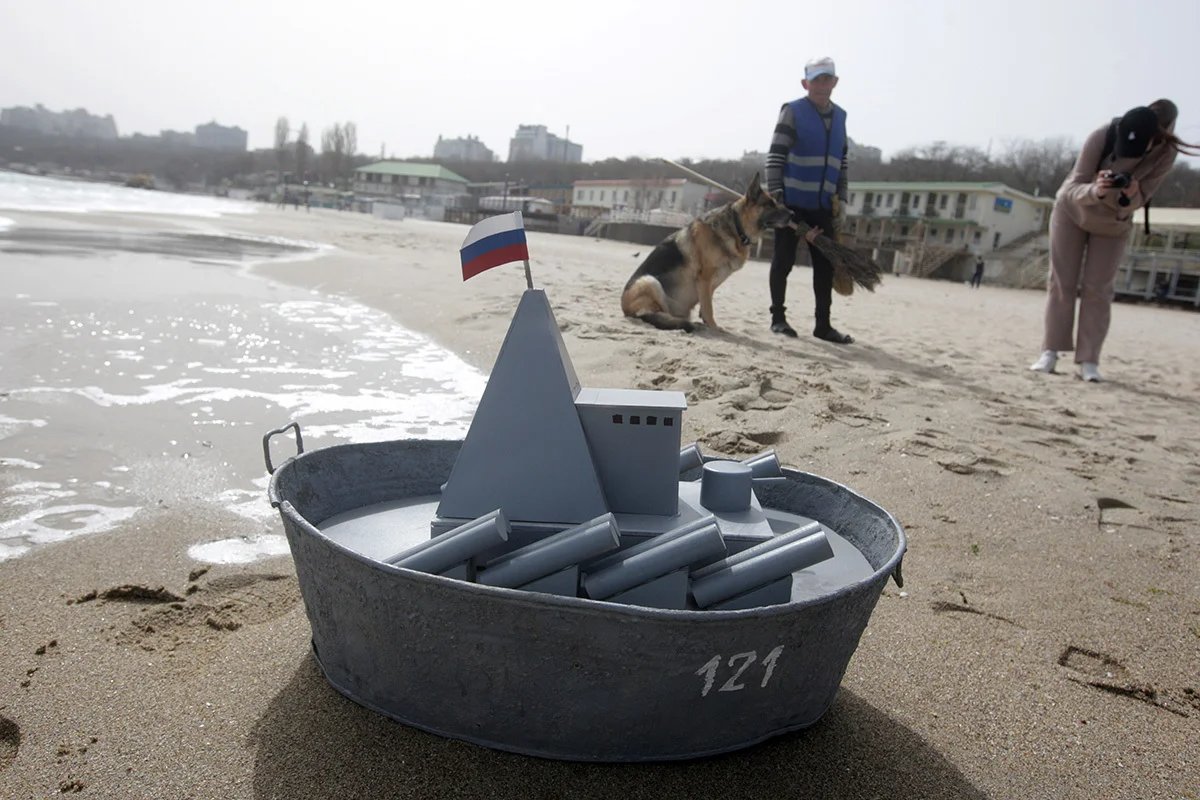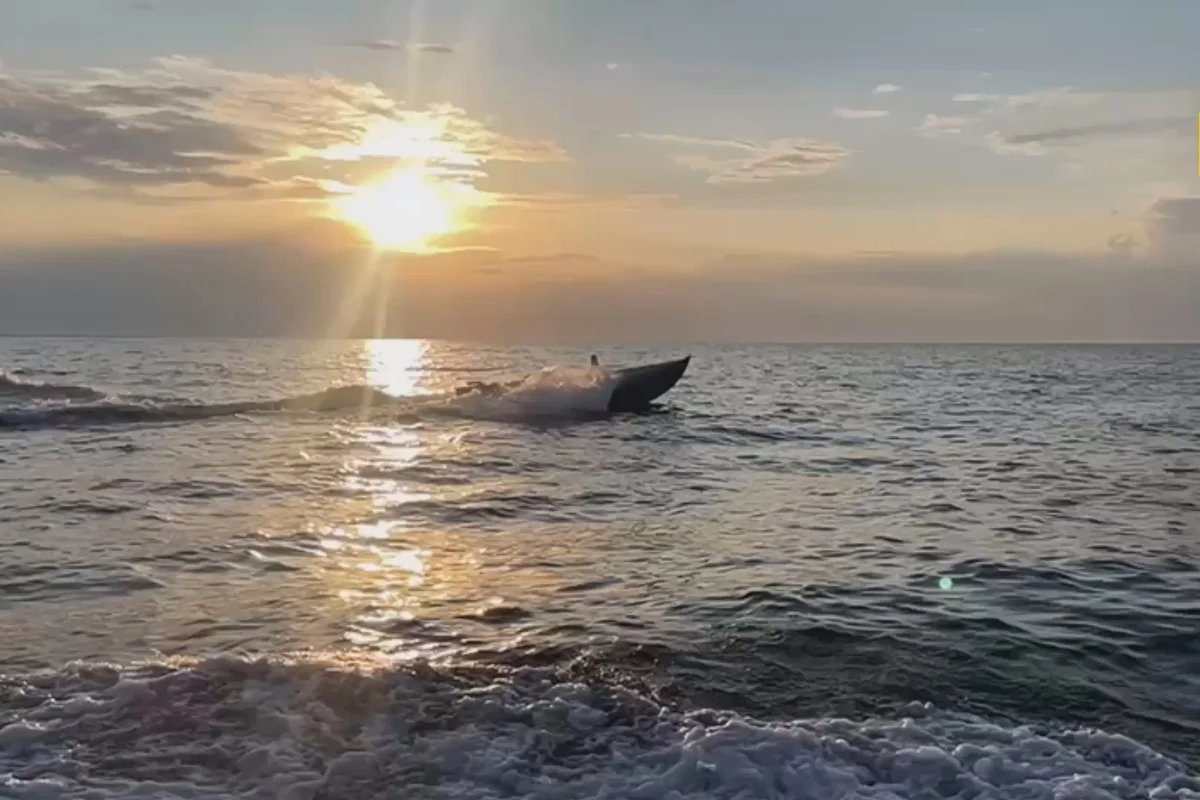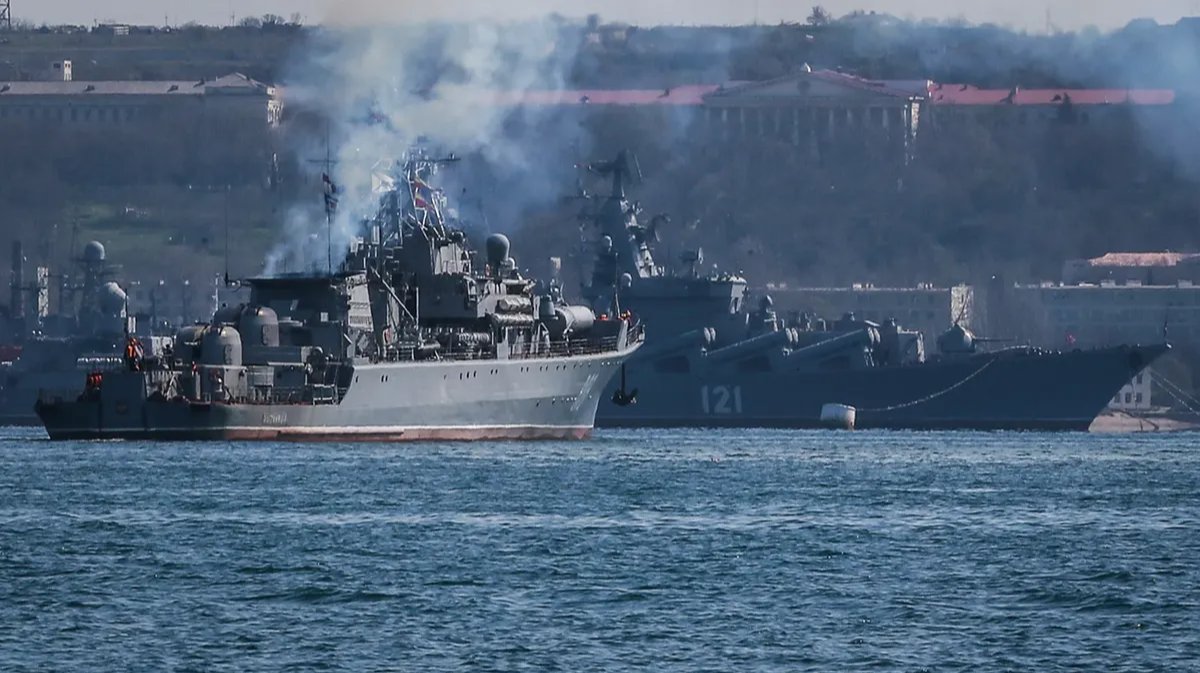The Sergey Kotov, valued at around €60 million, was one of Russia’s newest warships, launched in January 2021. Named after Soviet military hero, Rear Admiral Sergey Kotov, the ship joined the Black Sea Fleet in July 2022. On 5 March, it was damaged beyond repair by an unmanned surface vessel (USV) controlled by the Defence Intelligence of Ukraine (GUR).
Corvettes such as the Sergey Kotov are designed to patrol the country’s marine borders, counter piracy, and perform search and rescue functions, but they are also used to transmit intercepted enemy instructions to other Russian ships or coastal missile systems.
The Sergey Kotov had come under attack by Ukrainian MAGURA V5 drones before, in July and September, according to one analyst who wanted to remain anonymous. On those occasions the ship was damaged but remained afloat. Two other Russian warships, the Ivanovets and the Caesar Kunikov, fared less well against the same type of drone, however; both were sunk in February.
A third of the fleet
The GUR began to mass produce MAGURA V5 USVs specifically to attack warships at sea. “Ukraine has now designed and begun to produce several almost identical models of USV,” says Roman Svitan, a military expert and reserve colonel with the Armed Forces of Ukraine (AFU).
The Security Service of Ukraine (SBU) is producing drones that can “travel up to a thousand kilometres, carrying several hundred kilos of explosives on board, and are controlled via satellite,” Svitan says. Adding that the MAGURA V5 weighed about a tonne. “No Russian ship today can withstand that kind of attack.”

A mock-up of a Russian warship on a beach in Odesa, Ukraine, on 1 April 2022. Photo: Stringer / NurPhoto / Getty Images
As a rule, attacks first immobilise a ship by hitting the engines, then finish it off by aiming the USV at the least protected part of the ship.
According to the Russian military expert, “GUR Chief Kyrylo Budanov has spoken of plans to install air defence systems on USVs. If Ukraine creates equipment capable of shooting down Russian planes and helicopters, the USVs will be dangerous to more than just ships”.
Israeli military expert David Sharp said unmanned kamikaze drones are far from new. He believes their use against the Black Sea Fleet, which is not highly combat-ready, and in a relatively small body of water, is not a good indicator for how effective they could be more generally. He says USVs would not pose a significant danger to the armies of more developed countries. US aircraft carriers wouldn’t approach a coastline where a potential enemy was located so wouldn’t be at risk of attack. In addition, American flotillas constantly monitor the area both from the air and using electronic reconnaissance.
“To attack a ship, you first need to know where it is,” Sharp says. “Many Russian naval vessels are sitting there as obvious targets. The Russian Navy doesn’t have a system for detecting marine drones and destroying them far from their bases.”

A Sea Baby marine drone. Photo: SBU
Sitting ducks
Ukraine’s success in creating long-range unmanned vessels means the Russian fleet now has significant problems with both permanent deployment and ammunition loading.
“Russian ships can currently be serviced and resupplied with ammunition in Novorossiysk, Sevastopol and Kerch,” Svitan continues. “All three bases are within the reach of Ukrainian marine attack drones.”
The Black Sea Fleet numbered approximately 75 ships not including support and escort vessels when the war began, according to Svitan, of which Ukraine has now disabled — sunk or seriously damaged — up to a third. He predicts that this trend will only gather pace this year “as the AFU will soon have aircraft with anti-ship missiles, making it possible for them to really go after ships at sea.”
“F-16s really could be a serious threat to the Russian fleet,” Sharp agrees, “if the aircraft come with the appropriate weaponry, which can successfully attack ships. The American aircraft have such missiles. We’ll see what’s forthcoming.”
Black Sea Fleet ships and submarines can currently only be fitted with Kalibr cruise missiles in Sevastopol. “In Sevastopol, there is an extremely high risk of being attacked by drones or coming under rocket fire. The approach to Crimea is dangerous, so the Russian army now fires Kalibr missiles far less. AFU operations have had a very important effect,” Svitan says.
Sharp counters, “There is no confirmation that Russia can only load cruise missiles onto warships in Sevastopol. … For all the AFU’s success, they have only hit very few vessels carrying Kalibr missiles to date. Russian ships can fire cruise missiles directly from the water, so it’s still too early to talk about a decisive Ukrainian victory at sea.”
Join us in rebuilding Novaya Gazeta Europe
The Russian government has banned independent media. We were forced to leave our country in order to keep doing our job, telling our readers about what is going on Russia, Ukraine and Europe.
We will continue fighting against warfare and dictatorship. We believe that freedom of speech is the most efficient antidote against tyranny. Support us financially to help us fight for peace and freedom.
By clicking the Support button, you agree to the processing of your personal data.
To cancel a regular donation, please write to [email protected]

